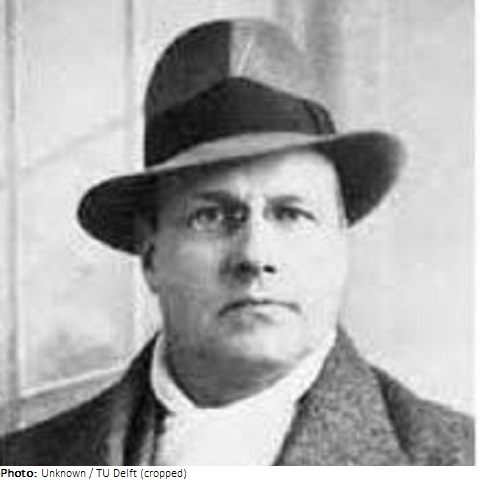Jan Duiker

Biographical information
| Roles | Referee |
|---|---|
| Sex | Male |
| Full name | Johannes "Jan"•Duiker |
| Used name | Jan•Duiker |
| Born | 1 March 1890 in Den Haag (The Hague), Zuid-Holland (NED) |
| Died | 23 February 1935 (aged 44 years 11 months 22 days) in Amsterdam, Noord-Holland (NED) |
| NOC |  Netherlands Netherlands |
Biography
Jan Duiker studied at the Technical College in Delft from 1908-13. In 1916 he founded an architectural practice in Den Haag with a student friend, and they moved to Zandvoort in 1919. In 1925, the office received an honorary diploma from International Exhibition of Modern Decorative and Industrial Arts in Paris. After the end of the partnership, Duiker moved his office to Amsterdam. In 1934, he was diagnosed with cancer, from which he died the following year, a week before his 45th birthday, despite undergoing radiation therapy.
Despite his short creative life, Duiker made a significant contribution to the development of modern architecture in Europe. He explored the use of new materials and constructions as well as functional building. In his early designs for an old people’s home in Alkmaar (1917) and the design for the Reich’s Academy for Fine Arts (1918), the influence of the American Frank Lloyd Wright (1867-1959) becomes evident.
Duiker developed his own architectural language in the mid-1920s. It is characterized by his social commitment, to improve general housing and living conditions. With the construction of a small country house near Aalsmeer (1924) and a large laundry near Diemen (1924/25), he began his involvement with the “Neues Bauen” movement. By using a reinforced concrete skeleton, Duiker turned away from traditional expressionist-oriented brick architecture. Duiker gained international recognition, especially with the Sanatorium Zonnestraal near Hilversum, which was considered one of the most modern sanatoriums of the 1920s. During the same period, in 1929, he realized Nirwana in Den Haag, one of the first high-rise residential buildings in the Netherlands.
Duiker’s experiences from the socially intended construction of high-rise buildings were reflected in the book “Hoogbouw” (High-Building), published in 1930. Influences of the Swiss Le Corbusier (1887-1965) are visible in his last buildings such as the Kino Cineac and the Winter Department Store, both in Amsterdam in 1934, as well as the Hotel-Theater Gooiland in Hilversum. His entire oeuvre is characterized by the visualization of building structure and construction, the use of modern materials, and their adaptation to technical requirements. Duiker saw himself as a proponent of a direction of functional architecture that sought a synthesis between form and necessities.
Referee
| Games | Sport (Discipline) / Event | NOC / Team | Phase | Unit | Role | As | |
|---|---|---|---|---|---|---|---|
| 1928 Summer Olympics | Art Competitions |  NED NED |
Jan Duiker | ||||
| Architecture, Designs For Town Planning, Open (Olympic) | Final Standings | Judge | |||||
| Architecture, Architectural Designs, Open (Olympic) | Final Standings | Judge |